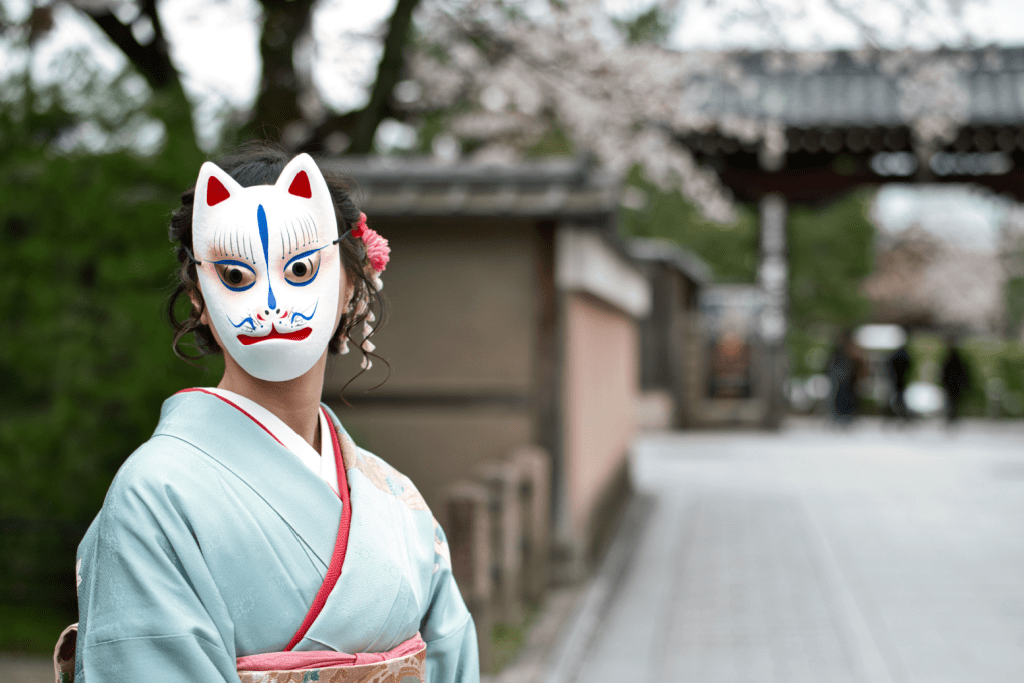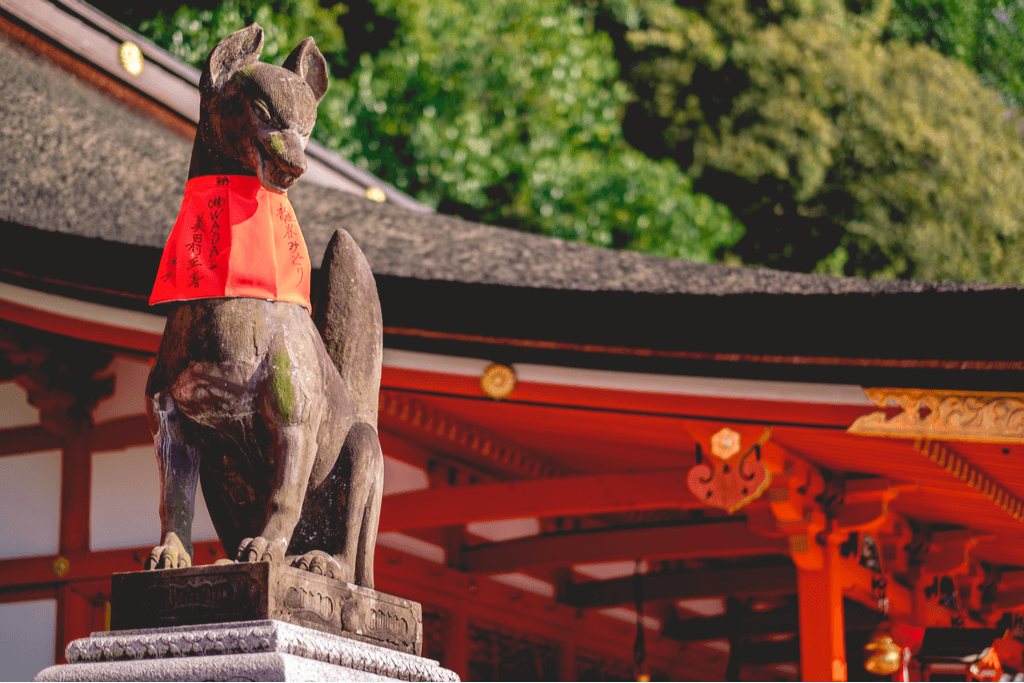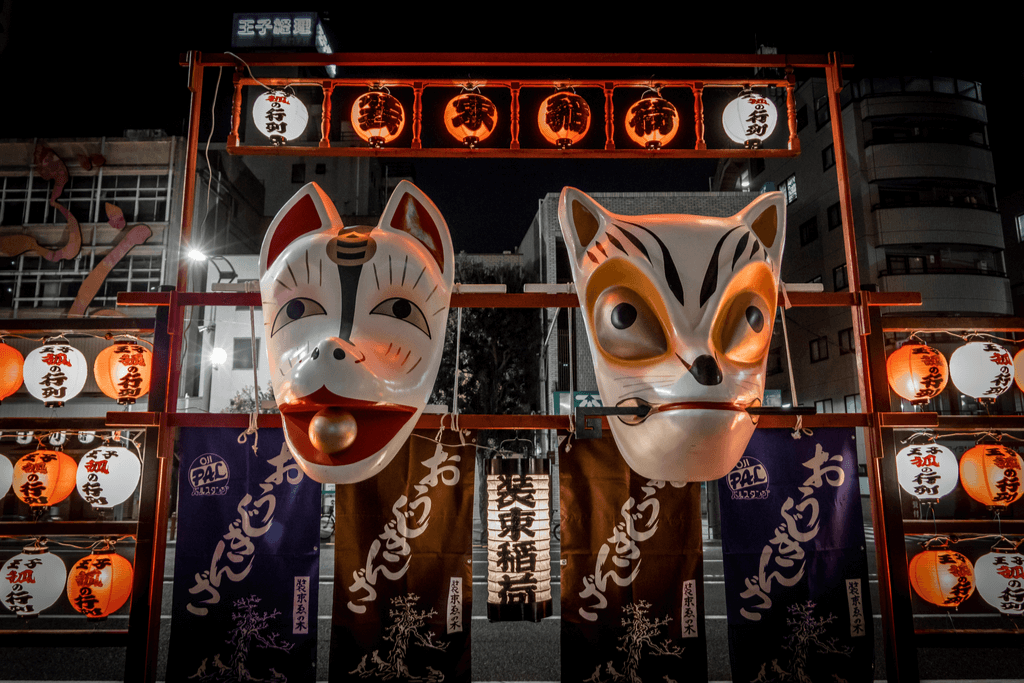culture
What is a Kitsune: Japan’s Amazing Shape-Shifting Trickster!
Terrell Wallin
Posted on May 02, 2022
Share:

When we think of Japanese yokai (spirits), we usually think of the creepy Japanese ghosts that have become very popular abroad. However, the Japanese kitsune (fox) has been a staple of Japanese mythology for a very long time, continuing to make appearances in Japanese media even now. They have a reputation as a trickster, but there’s much more to it than that.
What is a Kitsune?
Well, kitsune translates to ‘fox.’ Actually, in ancient Japan, foxes often lived rather closely to humans. This led to plenty of Japanese folktales about the kitsune, almost entirely positive. That being said, the fox of Japanese folklore is only slightly different from a regular fox. Their appearance is initially the same at birth, but as a mythical kitsune grows in power, its appearance changes, too.

Kitsune, according to Japanese mythology, have paranormal abilities that also affect how they look. As a fox gets older, they get both stronger and wiser. Also, as they become more powerful, they gain more tails, with nine being the highest number. In other words, if a person saw a mythical fox, the more tails they had, the older, wiser, and more powerful the fox was.
Many stories even say that foxes only grow those extra tails after 100 years of being alive, gaining a new one every year. The nine-tailed fox is supposedly so powerful that they can see and hear anything happening anywhere. They also have an infinite amount of wisdom. Even better, if they live 1000 years, they will turn white or gold in color and become a tenko, a heavenly fox who ascends to heaven.
Looking for snacks as magical as a kitsune? Check out Sakuraco! Sakuraco sends traditional Japanese snacks, teas, ceramics, and more right to your door all the way from local makers across Japan!
The Kitsune Myth
Although foxes are known as tricksters, with many stories showcasing mischievous or malicious intent, this was not their only place in Japanese mythology. Based on the type, kitsune are also portrayed as faithful, kind guardians.
In the Shinto religion, these animals are associated with Inari, the Shinto kami (god or spirit) of rice, as their messengers. Plus, some people sacrificed for them as a deity because of their power and supernatural affiliation. In Japanese folklore, the white or gold foxes are the messengers of Inari and are considered a good omen.
Not only did they protect Inari shrines by warding off evil, but they also helped the local people. Locals would request these kitsune’s help in curing possessions and defending them from the more malicious fox spirits.

Their portrayal in Japanese folklore as tricksters started much later in history. Stories from China about fox spirits brought the idea of foxes as mischievous, with this portrayal also becoming part of Japanese folktales. Also, during the Edo period (1603-1867), foxes became known as witch animals that couldn’t be trusted.
This led to there being two main types of kitsune appearing in folklore. Zenko are the good foxes who are kind and act as messengers. Meanwhile, yako are field foxes who are the trickster type. However, these are not the only types, with local folklore featuring new types of foxes in folklore.
Their Abilities
Although infinite wisdom, a ticket to heaven, and amazing sight and hearing are great, that is not the only thing they could do.
Shapeshifting
According to many folktales, a kitsune learns how to shapeshift into human form at the age of 50 or 100 years old. However, this task often requires preparation, like gathering reeds, a leaf, and a skull to perform the transformation.
The Chinese version introduced the idea of kitsune transforming into beautiful women to seduce young men. However, in Japanese stories, these foxes were often known as devoted wives who only left after being discovered or remembering their lives as foxes. Plus, children from these relationships would often have supernatural or physical abilities.

There were also stories of young, attractive women who walked alone at night being kitsune. One possible reason is that the “fox face” was beautiful. A narrow face, close-set eyes, thin eyebrows, and high cheekbones characterized the fox face. So foxes were said to keep their features often when turning into a young woman. However, foxes weren’t just limited to beautiful young women. They often transformed into young girls, boys, and elderly men as common options.
Possession
This ability was a bit more mischievous in how they used it. Trickster foxes could possess someone, usually only those who wronged them, and cause them to act strangely. They may walk through town naked, put them in compromising positions, or say and do some extraordinary things in the town square.
They may even eat massive amounts of the kitsune’s favorite foods, like Japanese tofu dishes, especially fried and red bean rice. The only way to remove the demon was at an Inari Shrine, usually with the help of the good foxes. However, after the fox spirit leaves, the person will never want to eat tofu or red bean rice again. It was such a big part of mythology that people considered it a disease in the Heian period (794-1185).
Their Weaknesses
Although the kitsune is a powerful being in Japanese mythology, the trickster foxes also have a few weaknesses. First, they have trouble hiding their tails, so a careless fox or one drunk on Japanese sake may accidentally show it and expose their identity. They’re also afraid of and hate dogs, often changing back and running away from them. Also, a very religious person may see the kitsune’s true nature just by looking at them.

Most importantly, a kitsune must always keep their hoshi no tama (star ball) with them. Hoshi no tama is a glowing ball that acts as a container for their souls. Without it, they lose their strength and will pass away. As a human, they may wear it as an amulet. As a fox, they carry it in their mouth or tails. Did you learn anything new about these creatures? Do you think a fox has ever tricked you? Let us know in the comments.

Discover authentic flavors with Sakuraco
Get Sakuraco 
1 Responses

Discover authentic flavors with Sakuraco
Get Sakuraco 
Related Articles

Okinawa Beaches: Five Great Tropical Escapes!
Okinawa Prefecture is a tropical paradise that is celebrated for its turquoise waters, beautiful, sandy coasts, and vibrant coral reefs. It has over 130 beaches, offering a coastal experience for every kind of traveler. These escapes range from secluded retreats to lively resorts. Today, we’ll explore five of the most captivating beaches in Okinawa!

Hokkaido: Amazing Places to Enjoy This Summer!
With endless fields of flowers, misty lakes, fresh mountain breezes, and gentle festivals, Hokkaido’s summer is a world uniquely its own. Let’s look at explore five locations worth visiting during this time of year!

Mount Fuji Summit: Visit Sites Like Chureito Pagoda and More!
Rising at 3,776 meters (12,388 ft), the Mount Fuji summit is truly a sight to behold. On a clear day, you can even see it from Tokyo! This impressive volcano has inspired many poems, artworks, and pilgrimages for centuries.

Okinawan Islands: Why You Should Visit Yaeyama!
While the rest of the country is famous for its high-speed trains and vibrant cities, the Yaeyama Islands move at the rhythm of waves and birdsong. This area will amaze you with its breathtaking natural beauty, blending majestic simplicity with the ancient cultural heritage. Keep reading to learn more about this Okinawan treasure!




This was all new information for me. It was quite interesting to learn and I learned a lot. What amazing stories!